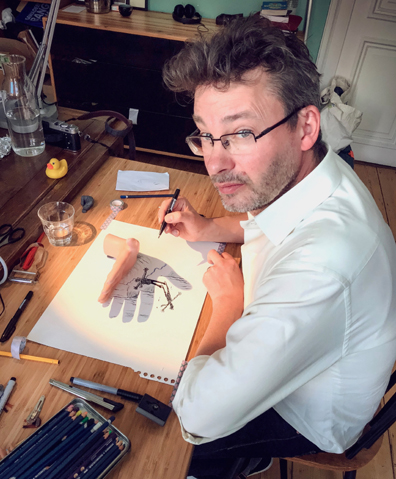 It began with a spontaneous teacup doodle, and has steadily grown into printed postcards, calendars, two excellent books (Shadowology and Shadow World), and a dedicated Instagram following! Today, we’re delighted to chat with Belgian artist Vincent Bal, who has an extraordinarily playful and unique eye for life, light, objects, and shadows.
It began with a spontaneous teacup doodle, and has steadily grown into printed postcards, calendars, two excellent books (Shadowology and Shadow World), and a dedicated Instagram following! Today, we’re delighted to chat with Belgian artist Vincent Bal, who has an extraordinarily playful and unique eye for life, light, objects, and shadows.
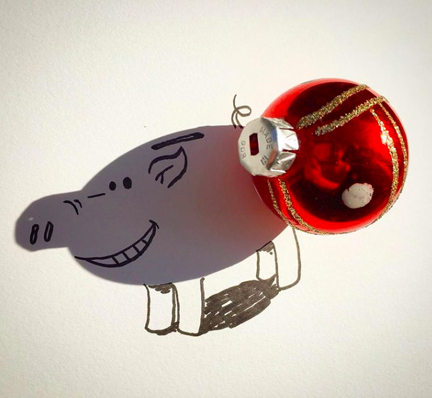
When did your relationship with shadows first begin?
It started by accident in the spring of 2016. I was working at my desk and noticed how the shadow of a teacup looked quite like an elephant. So, I completed the image by drawing some legs and ayes and took a picture. When I shared it on social media, people reacted very enthusiastic.I thought it was funny too, so I decided to try and make 100 of these ‘shadow doodles’, I have not stopped since.
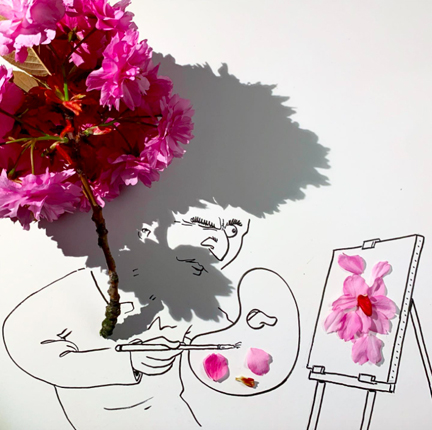
How have your interactions with light, shadow and objects changed over the past five years?
In the beginning I was happy with every image I could extract from the shadows. I was constantly looking through the drawers in the house to find new objects to work with. At this point I think I have exhausted the supplies in my own house. I must have tried everything. Also, I set the bar higher. I don’t want to repeat myself, so sometimes it takes me longer to come up with something new.
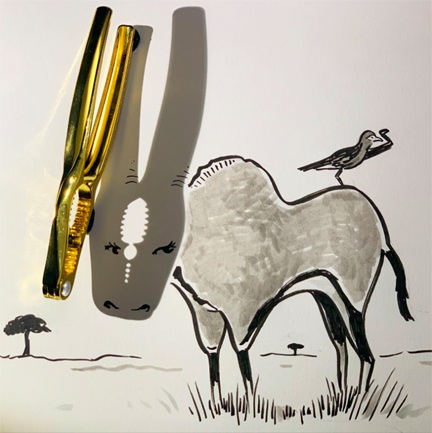
Also, I have developed little videos a bit more. It can be satisfying to see the image created before your eyes and it is fun to add an extra layer with sound effects and music.
Is there an unusual story or connection behind one particular drawing?
They are all special to me. But I remember the first time I discovered I could use the shadow as a setting for a scene. So not really use the outer shape of the shadow, but rather the nuances in the grey inside. I was sitting on a terrace of a house we rented in Italy. Every morning around seven the sun would shine on that specific place and give beautiful long shadows.

So I went there and starting experimenting with some of the glasses from the cupboard of the rental house. And suddenly I saw a beach. I just added two small silhouettes and some seagulls, and it came to life. The image was called ‘Love On Shadow Beach’. That was a wonderful discovery, and I have made a few beach scenes since then.
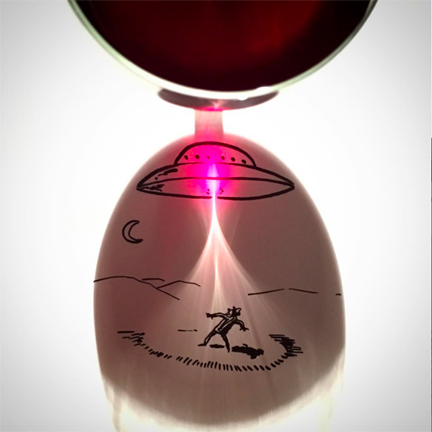
Many of your illustrations use natural light. But others appear to use artificial light as well. Do you also have a set of particular lamps and lights you use…similar to a painter using different types of brushes?
The Sun is definitely the best light source, she gives wonderfully crisp shadows. So in the first months I always drew with sunlight. But that has a few disadvantages as well. The sun moves, and so you must draw quick, because the shadows really change in the course of one minute. That way I could never do drawings that were a bit more elaborate.
And I live in Belgium, we don’t have a lot of sunshine here. I should have invented some way to draw with rain!
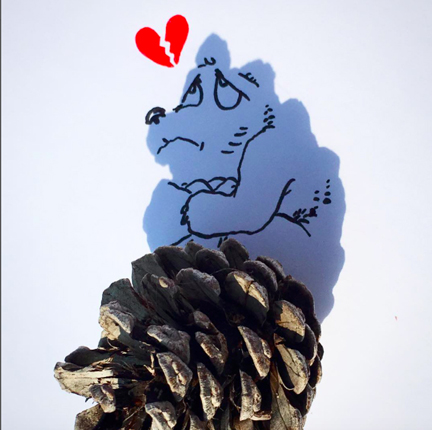
So I started working with lights, and it was quite a search to come up with the perfect light source. It had to be a very small source, so the shadows are sharp. The bigger the light source, the less focused the shadows are.
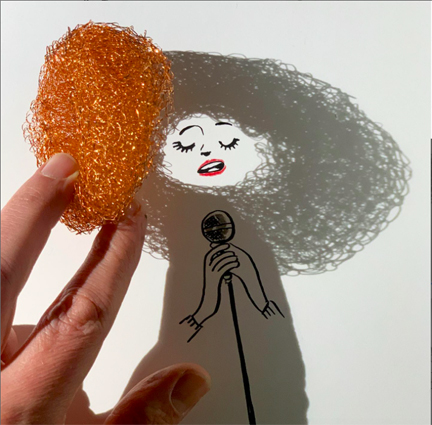
In the beginning I used a clear light bulb, but they get very hot, and I once almost burnt some cushions that way. Now I have a little LED light standing on a flexible arm and that works well. But whenever the sun shines into my office, I feel the urge to see what I can do with that light.
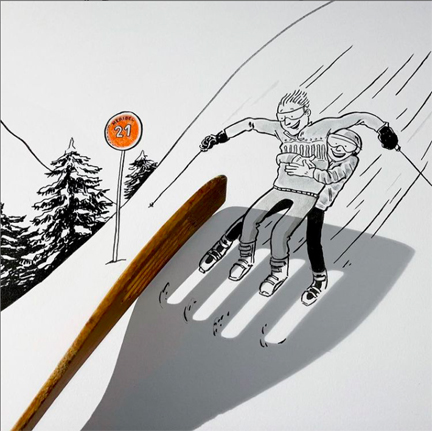
Is there one object you have that you can’t quite capture the shadow/concept of yet?
Maybe in the future I would like to make something bigger, but the logistics scare me a little.There is practically no planning in my work now. I discover and create at the same time, and with bigger objects and shadows that might be more difficult, but who knows?
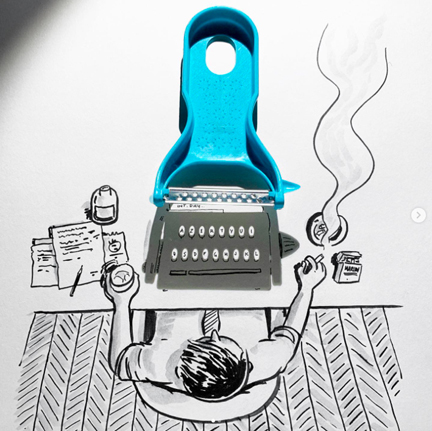
Images courtesy of Vincent Bal
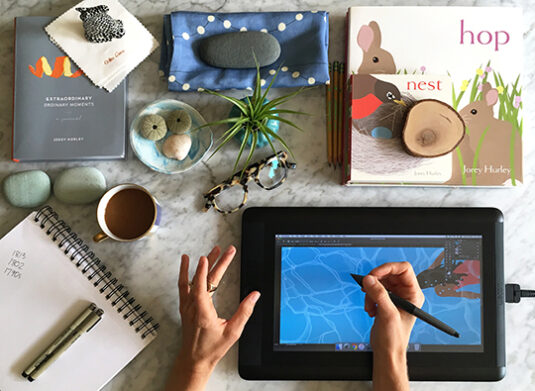
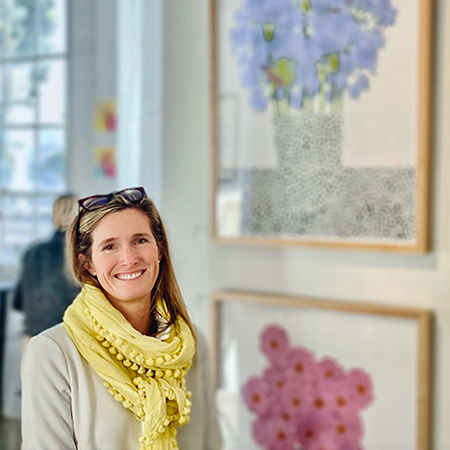 I wake up early and draw every morning with coffee. My studio is on the ground floor of our house. I create my art digitally, and I’ve cycled through various types of tablet and various drawing programs – there are lots of good options. Recently I like Procreate with an iPad pro.
I wake up early and draw every morning with coffee. My studio is on the ground floor of our house. I create my art digitally, and I’ve cycled through various types of tablet and various drawing programs – there are lots of good options. Recently I like Procreate with an iPad pro.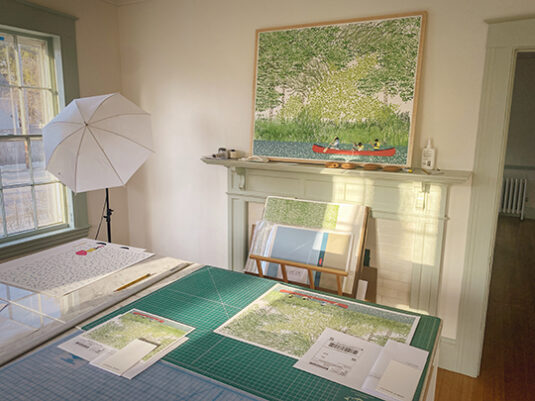 This is the room I use for layout, framing, anything that benefits from great light. It’s basically just windows and a big table.
This is the room I use for layout, framing, anything that benefits from great light. It’s basically just windows and a big table.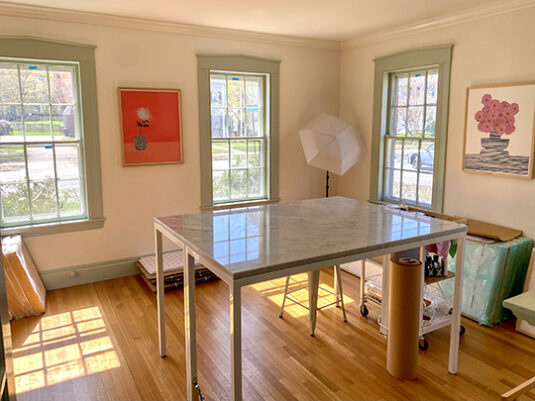 Here you can see the table in an unusually clean state. Our house, where my studio is, was built in 1845, so it has great natural light. The windows still have the original glass, which is a little wavy, and I love how that softens everything.
Here you can see the table in an unusually clean state. Our house, where my studio is, was built in 1845, so it has great natural light. The windows still have the original glass, which is a little wavy, and I love how that softens everything.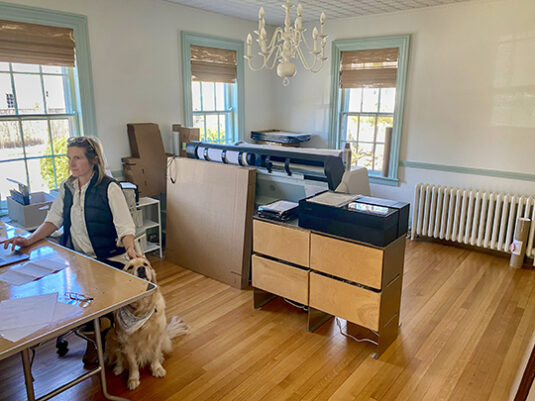 I spent most of my time in the computer and printer room. I have my big monitor here and in the winter I put a heated carpet under my desk (we’re in New England so it’s chilly) and my dog loves that. In the late afternoon there’s really great light – it’s my favorite time in the studio especially in the spring and summer when the days are long.
I spent most of my time in the computer and printer room. I have my big monitor here and in the winter I put a heated carpet under my desk (we’re in New England so it’s chilly) and my dog loves that. In the late afternoon there’s really great light – it’s my favorite time in the studio especially in the spring and summer when the days are long.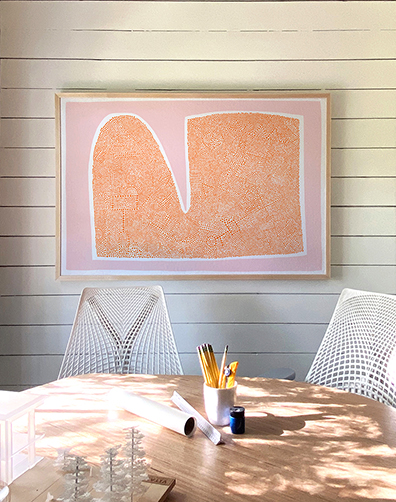 This room is for zoom calls and collaborative work.
This room is for zoom calls and collaborative work.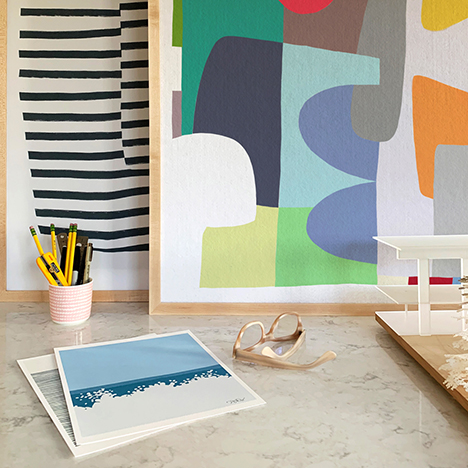

 It began with a spontaneous teacup doodle, and has steadily grown into printed postcards, calendars, two excellent books (Shadowology and Shadow World), and a dedicated
It began with a spontaneous teacup doodle, and has steadily grown into printed postcards, calendars, two excellent books (Shadowology and Shadow World), and a dedicated 








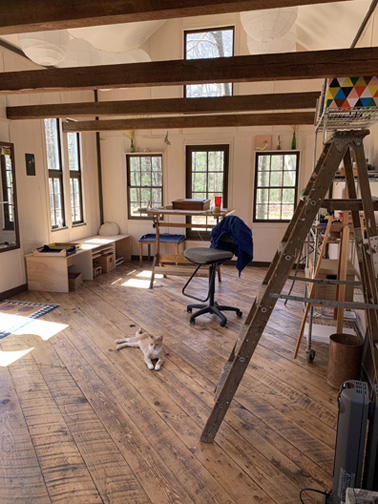 Today we’re visiting author and illustrator, Jessica Love! Her debut picture book, Julián is a Mermaid (Candlewick, 2018), is the story of a young boy who loves mermaids and dresses up like one. And, under the loving acceptance of his Abuela, joins others in a costumed parade. Gorgeously illustrated, the book was a 2019 recipient of the Stonewall Book Awards, sponsored by the Rainbow Round Table of the American Library Association.
Today we’re visiting author and illustrator, Jessica Love! Her debut picture book, Julián is a Mermaid (Candlewick, 2018), is the story of a young boy who loves mermaids and dresses up like one. And, under the loving acceptance of his Abuela, joins others in a costumed parade. Gorgeously illustrated, the book was a 2019 recipient of the Stonewall Book Awards, sponsored by the Rainbow Round Table of the American Library Association.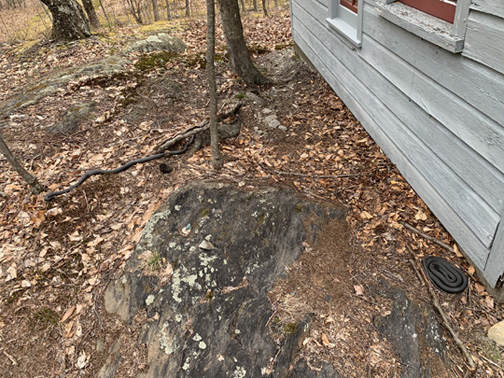 Over the course of several months, Daniel transformed the place–he put in windows, did the electrical wiring, and even some ad-hoc plumbing so I could have a functioning sink. He built custom cabinetry, insulated the whole building, hung drywall on the ceiling and made beautiful maple plywood wall finishes, with custom paneling.
Over the course of several months, Daniel transformed the place–he put in windows, did the electrical wiring, and even some ad-hoc plumbing so I could have a functioning sink. He built custom cabinetry, insulated the whole building, hung drywall on the ceiling and made beautiful maple plywood wall finishes, with custom paneling.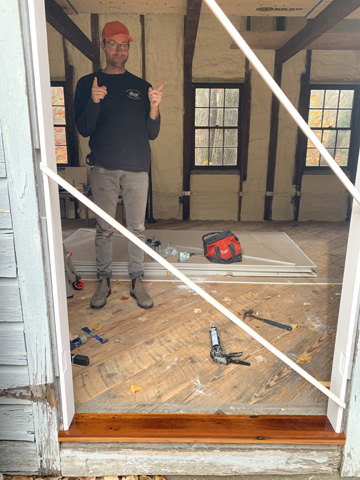 The result is that every surface in my work studio was lovingly hand-made. I get to work inside a present.
The result is that every surface in my work studio was lovingly hand-made. I get to work inside a present.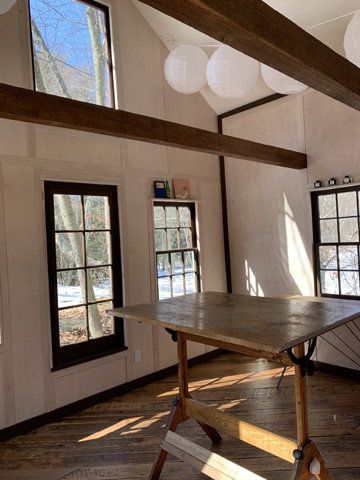 The snakes still live around the building, but we respect each other, and keep our distance. I consider them my co-workers.
The snakes still live around the building, but we respect each other, and keep our distance. I consider them my co-workers.